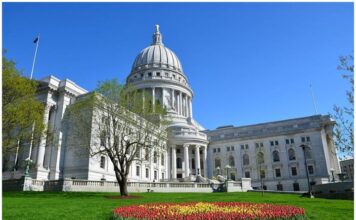Since becoming Postmaster General (PMG) on June 15, Louis DeJoy has been accused of everything from election interference to killing baby chickens. As is often the case in this hyper-charged and uber-partisan era, truthful and nuanced takes have taken a backseat to baseless conspiracies.
Postal conspiracizing peaked in August as politicians, pundits and even famed musicians accused DeJoy and President Donald Trump of trying to dismantle the United States Postal Service (USPS). Well, it’s been about two months since this fact-free postalpalooza, and now there’s new data out on mail deliveries before, during, and after DeJoy implemented operating reforms. While mail did (slightly) slow down in July mainly due to the pandemic, delivery speeds have rebounded since then. Instead of embracing fearmongering and conspiracies, policymakers should identify USPS’ real problems and call for postal reform.
While still not at pre-pandemic levels, mail delivery speeds have significantly improved since the summer. According to service performance data for the week of Oct. 3, 86.15 percent of first-class mail and 89.17 percent of marketing mail were delivered on time. That’s a marked improvement from those categories’ respective on-time percentages of around 83 percent and 80 percent during mid-July. And, the agency reports, “for first-class mail and marketing mail, 98.00 percent and 97.67 percent of mailpieces respectively reached their intended destination within two days of the service standard.” The USPS is also embracing its outsized role in the upcoming election and has processed roughly 98 percent of election mail on time.
Sure, on-time percentages for virtually all categories of mail are significantly down this year. This cannot be helped because a devastating pandemic sidelined thousands of postal workers. American Enterprise Institute scholar Kevin Kosar notes, “This year, nearly 35,000 postal workers have missed work due to being quarantined … That amounts to more than 5.5 percent of the agency’s workforce of 625,000.”
The number of postal workers quarantined significantly decreased from mid-April to mid-June, only to spike over the summer. This surge in postal COVID-19 cases to unprecedented levels reflected national case trends. Coronavirus cases skyrocketed across the country starting in mid-June before declining again in late-July. This surge in cases also happened to coincide with PMG DeJoy taking the helm of the USPS on June 15.
Thus, any changes made by the PMG – such as eliminating billions of dollars’ worth of overtime expenses – were bound to be blamed for any USPS slowdown. But as detailed data from The New York Times shows, the percentage of mail delivered late spiked at least two weeks before DeJoy implemented major changes such as curtailing overtime. Since the increase in late mail, Democrats on the Senate Homeland Security and Governmental Affairs Committee have pressed the USPS to provide regular service performance data.
In an October 9 report, Committee Ranking Member Sen. Gary Peters (D-Mich.) admitted that mail delivery times had improved since the summer but attributed the improvements to pressure from Congress and a string of federal lawsuits. Throughout September, federal courts issued a slew of injunctions to force the agency to ditch overtime reforms. To comply with these orders, the USPS urged its managers to approve overtime trips as they saw fit to deliver the mail on time.
But the data makes clear that these orders and injunctions have little to do with the USPS’ on-time changes. According to The New York Times’ analysis, the agency’s on-time percentages started to improve around the start of August and steadily increased throughout that month. This improvement lines up with nationwide COVID-19 cases, which started to decline shortly before on-time percentages started increasing. But, it’s difficult for policymakers to admit they’re wrong after investing so heavily in bunk theories about DeJoy kneecapping the USPS. Lawmakers should focus on getting the agency’s $160 billion debt under control, instead of clinging onto conspiracies and baseless allegations.
By Ross Marchand
Go to Source
Reposted with permission
































